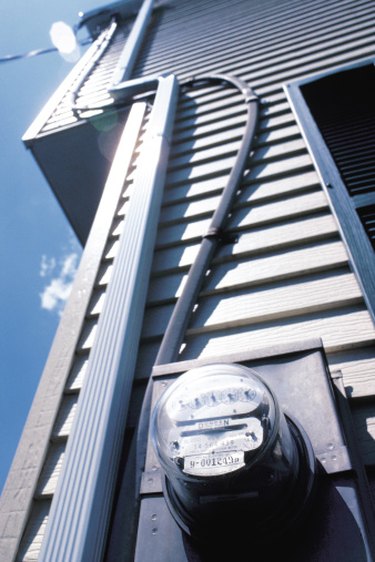Things You'll Need
Graph paper
Pencil
Ruler
Hot or black electrical wire
Ground or green electrical wire
White or neutral electrical wire
Electrical metallic tubing or metal conduit
Conduit angle pieces
Conduit angle bender tool
Protractor
Measuring tape
Metal conduit strap
Self-tapping screws or sheet metal screws
Philips head screwdriver
Compression couplings
Junction boxes
Box connectors
Lock rings

Installing electrical conduit in metal buildings may seem like a daunting or dangerous task. By following the correct process and electrical codes, you can install the electrical conduit yourself. Metal naturally conducts electricity, so to safely run wires through a metal building you have to protect the wires from wear. Do this by running them through metal conduits. To prevent electrical shock, properly grounding your electrical system is important, especially in a metal building.
Step 1
Draw a diagram of the floor plan. Indicate all the locations you want to install electrical fixtures and electrical boxes. Determine the total number of wires you will need in each section of conduit by multiplying three times the number of circuits. Do this because there are three wires per circuit, including a neutral, ground and "hot" wire, which means that it is the active wire that carries electricity to an outlet or switch.
Video of the Day
Step 2
Consult the table in the National Electrical Code for minimum conduit size for the size of wire you need.
Step 3
Mount electrical boxes and panels to your walls, according to your diagram.
Step 4
Run electrical metallic tubing also known as "EMT," a metal conduit, between the boxes as in your diagram.
Step 5
Measure the height from the top of the box to the ceiling and bend the conduit where the wall meets the ceiling. Use a conduit bender tool if you need it at a custom angle, or buy a pre-formed 90-degree piece.
Step 6
Use a metal conduit strap that corresponds to the conduit size. Screw self-tapping screws or sheet metal screws through the strap and into a structural member of the metal building.
Step 7
Attach a metal conduit strap on the conduit and onto the building within 3 feet of each box and every 10 feet horizontally or vertically. Make sure the strap is tightly fastened and sturdy.
Step 8
Do not make any turns in the conduit that total 360 degrees in each run. Add a junction or pull box to include more turns.
Step 9
Use compression couplings and tighten securely to join sections of EMT. Twist the couplings to tighten them until they hold the end of the conduit firmly.
Step 10
Connect the conduit to each box using a box connector. A box connector is similar to a compression coupling, except it has a male connector or exposed threads on one end. Use a hammer and pliers to remove a perforated hole in the box slightly bigger than the box connector's threads and secure the connector by screwing a lock ring on the threads from the inside of the box. A lock ring acts as a nut to hold the box connector tightly locked in place. Slide the wires through the conduit and box connector then pull the wires into the junction box.
Video of the Day